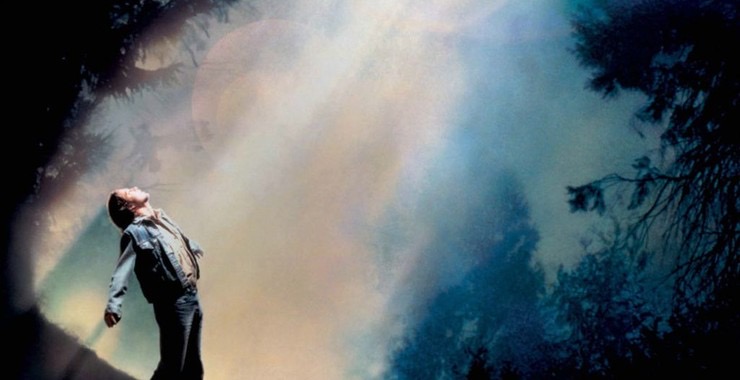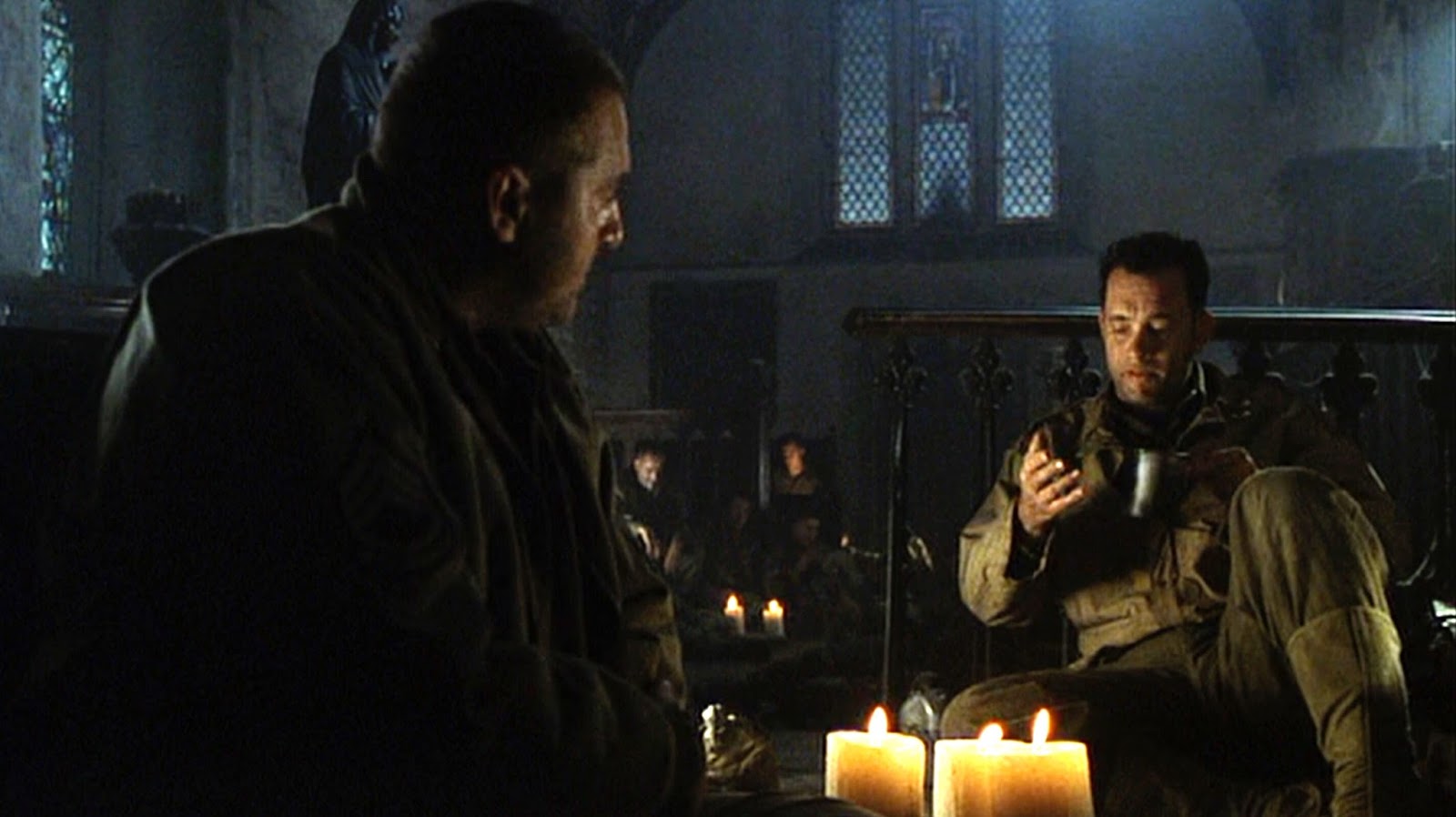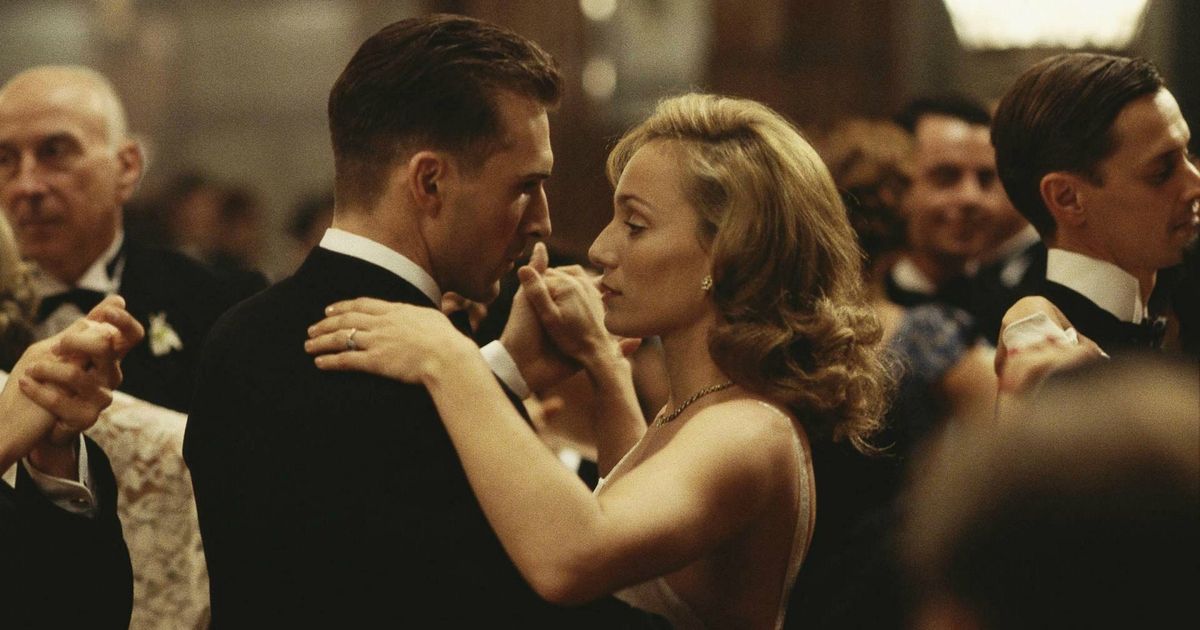When I was around ten years old I returned home in the early afternoon to find my father having a beer at the kitchen counter. Nothing about this was particularly odd, although having him home at that hour was a little unusual. At that point in my life my father worked in the woods, something he did for most of my childhood, so seeing him before sundown was a rare occasion. He sat there quietly, drinking Bud from a can, not making any eye contact. My mother knew something was up and asked why he was already home. As he lifted his baseball cap clad head I noticed a small patch of white above his eyebrow. My mother did as well. She quickly took off his hat and revealed a large medical bandage covering the majority of his forehead. Before she could ask what happened he told us that the chainsaw he had been using had hit a knot in the wood, kicked back, knocked his helmet off and briefly made contact with his head. Anyone who has ever seen a chainsaw operate, whether it be in real life or only in horror movies, knows how quickly destructive they are. My mother scolded him for trying to hide the injury and then hugged him, thankful he hadn’t more seriously injured himself.
For me, for perhaps the first time in my young life, I realized that my dad worked a dangerous job and could possibly be maimed, or even die, while doing it. I didn’t like the thought of him going into the woods for days at a time, often living in a small trailer or camper without power, for days at a time. The thought of him rolling over his skidder onto himself or even a damn tree falling on him became very real. Boys that young shouldn’t realize that their dads could die at work. It seemed unreal.
In the moment I didn’t think to consider if the story was actually true. It was certainly a plausible story, as accidents like this can happen, but my dad certainly knew to look out for knots in trees. He’d shared that knowledge with me in years past when I’d gotten old enough to operate the lever on the log splitter. Knots cause the wood to “act funny” as he’d said. In retrospect I have a hard time believing that he’d used his saw anywhere near a knot, even if he had been drinking. He was never a firm believer in safety but there was always a sense of self-preservation.
What if he had been lying? What if he’d gotten into a fight with a coworker? My father was most definitely a drunken scrapper, and on more than one occasion found himself in a bar fight. I can’t imagine he made friends easily, and in a job where different personalities find themselves in close quarters, it isn’t that large of a leap to make. Was there another person involved, and if so, how did they fare? There wasn’t any police involvement, another aspect of life my father was familiar with, so was my imagination getting the best of me?
His job, and the woods at large, became more frightening. More than anything else about that day, the image of the blood stained bandage stuck to my father’s head stuck with me.
Images are powerful that way. In many instances it’s what can separate a good movie from a great movie. We’ve all got scenes from a movie that stick with us, that bring a smile to our face every time we revisit it: Vito Corleon patting the cat on his lap at the beginning of The Godfather, Bender’s fist pump at the end of The Breakfast Club, Father Merrin’s fog covered arrival in The Exorcist. The list is practically endless, so much there’s a website, Film School Rejects, that consistently makes lists of them.
But what happens when one particular image can burn itself into your head and give you chills each time you think of it, so much that you wait over twenty five years before revisiting the movie?
Such as the case with Fire In the Sky, and if you’ve seen the movie you likely know exactly what scene I’m talking about. The film was released in 1993, and by the time I rented it from the local video store I was either 17 or 18, past the age when stories of the boogieman had frightened me. Thanks to HBO and the local video store I had grown up with horror movies. I had seen every entry in the holy trinity of 80s/90s horror, Friday the 13th, Halloween, and A Nightmare on Elm Street. I had been reading Stephen King books regularly since the age of 12, devouring every copy on my grandmother’s bookshelf as well as religiously seeking out both the television and movie adaptations. I’d managed to watch just about every horror movie I’d heard of and had yet to blink, with the closest exception being The Texas Chainsaw Massacre (hmm….chainsaws again) which had freaked me out because it had been so lo-fi and real looking, the closest approximation to a snuff film that I ever want to see. To put it simply, I felt like there wasn’t anything a movie could show me that would ever scare me.
As is the case with most young boys, I was entirely overconfident and demonstrably wrong.
At the time I didn’t expect too much from the film. It had no big name stars, didn’t take place in outer space (like a proper alien movie should) and seemed like it’s story had been dragged straight from the pages of supermarket tabloid headlines. While alien abductions seemed like a prevalent problem in the 80s/90s, much like the Bermuda Triangle, it didn’t seem like something I needed to be worried about. But the box art was excellent, with it’s focused light beaming from the sky, illuminating a poor soul about to be sucked aboard and the promise that it was all “based on a true story.” In truth I might not have even rented it but it included the date of the abduction, November 5, 1975, which happened to be the exact birthdate of one of my childhood best friends. How could I pass it up?
Fire In the Sky tells the story of Mike Rogers, played by future Terminator Robert Patrick. He’s a rather simple man, a logger who runs his own crew and they happen to have a contact to do some clear cutting in the woods of the White Mountains in Arizona. His crew contains a group of rag-tag guys, from his best friend and eventual abductee Travis (D.B. Sweeney), religious man David (Peter Berg), barely old enough to hold a chainsaw Greg (Henry Thomas) and the loner/bad news outsider Allan Dallis (Craig Sheffer). It’s shown from the get-go that while these men work together they don’t always get along, particularly Dallis and Travis.
One night after work five of the six men return from a long day and enter the bar. It’s obvious that something is wrong as they discuss the importance of sticking to the story. They need to be in complete agreement before the cops are called. Something isn’t right, and at the very least it feels conspiratorial. What happened to Travis? Why isn’t he with them?
As their supernatural tale unfolds, they reveal that while travelling home from work they say a bright light in the distance, the titular fire in the sky, and instead of driving in the opposite direction they go towards it. The light reveals itself to be a UFO, which Travis, the impetuous dreamer of the group, decides he needs to get out of the vehicle and take a closer look at. Soon he is hit by a beam of light and collapses. The men, in a state of understood panic, drive away leaving their friend behind. Mike is particularly hit hard by this and decides to turn around and go back for Travis, who has now disappeared.
If you paid attention to the opening story in this essay, you can understand why this movie drew me in. Mike wasn’t that different from my father. While he didn’t lead the crew, he shared much in common with him. He had two kids waiting back at home alongside his wife and bills that never seemed to be paid off in full. There were always money problems and poverty seemed normal. Men who looked like the actors were my dad’s coworkers, to the point that you could’ve slipped one of them into the film and they would’ve seemed right at home. While I never thought my father had ever encountered aliens in the Maine woods, I was quite certain they’d done at least a few things that would’ve found themselves worrying about the law. I could picture them sitting around a campfire, drinking beers, discussing how they had to stick to the story.
That’s important for the characters, because as you would expect, the town folks and the police, particularly 80’s staple of wise decisions James Garner, don’t believe their story. They’re fully expecting to find Travis buried in a shallow grave in the mountains, the victim of foul play likely at the hands of Dallis. But the men don’t waver in their story, agreeing to take, and pass a lie detector test. And just when it seems like the town is going to lynch the men, Travis reappears in the middle of the night, naked and terrified in a nearby town.
Remember when I said horror movies didn’t scare me? Well this film did, even if you don’t classify it as a horror movie.
As I type out these words each scene of Travis onboard the ship comes back to me. From his panicked trip down a hallway (mirrored by his hospital stay) to the corpse storage (with it’s ick factor dialed to 11) to the scene that stuck with me over two decades, this movie freaks me out still. I don’t even want to type them, as any words I use to describe the scene won’t do it justice, but never in my life have I ever felt so helpless watching a movie. It wasn’t just that he was kidnapped and probed, but he was awake and aware the entire time, terrified by what was happening but unable to do anything about it. It was traumatic to witness so I can only imagine what it would’ve felt like to go through something so awful. To make matters worse, people didn’t believe him. Anyone who has ever worked with a victim of trauma knows that reliving the experience by having to talk about it, or worse yet, defend yourself against it, knows that it can be re-traumatizing and cause further damage.
That’s how it felt watching this movie, like I was watching something I shouldn’t be seeing because I didn’t have the skills to deal with what I was seeing. It’s one of the few times in my life I’ve ever felt like that, and I’ve spent years working with young people who’ve experienced various traumas in their life. While I wasn’t as affected by it on this viewing, I can understand why this movie truly shook me when I was younger.
Upon rewatch I feel like this movie was trying to do more than what was expected of it. Sure, I knew that there was an alien abduction in the movie, but I wasn’t prepared for the reactions to it, from the town’s dismissal of their story and the subsequent ostracization of the men, to the portrayals of post traumatic stress disorder. That’s perhaps what surprised me the most on this viewing. While Travis was able to overcome what happened to him, at least as it was shown, by marrying, having a kid, and getting a good job, Mike wasn’t so lucky. Years later he continued to be haunted by his decision to leave his friend, to be blamed for what happened. His life fell apart, as his wife left him and he moved to a cabin in the woods where he had little to no contact with anyone. It was a lot to take in at that age.
I know what it was like to not want to share your story. I never talked about my homelife, not to my friends, to my teachers, and certainly not to the police. My father’s outbursts of violence were just a part of living, something to be feared and avoided at all costs, but definitely not something I was going to tell people about. Police had made their fair share of visits to my home, often taking him away with them, with nights spent at my grandparents for “safety” but I never talked about it because I always wondered if I’d be believed. If he was allowed to come back home then it couldn’t have been too bad, right, so would I have just come across as the boy who cried wolf?
I understand Mike Rogers. I understand why he second guessed himself and how those choices haunted him.
Perhaps that’s why this film haunted me for so long.
Now if I could only get that image out of my head.


